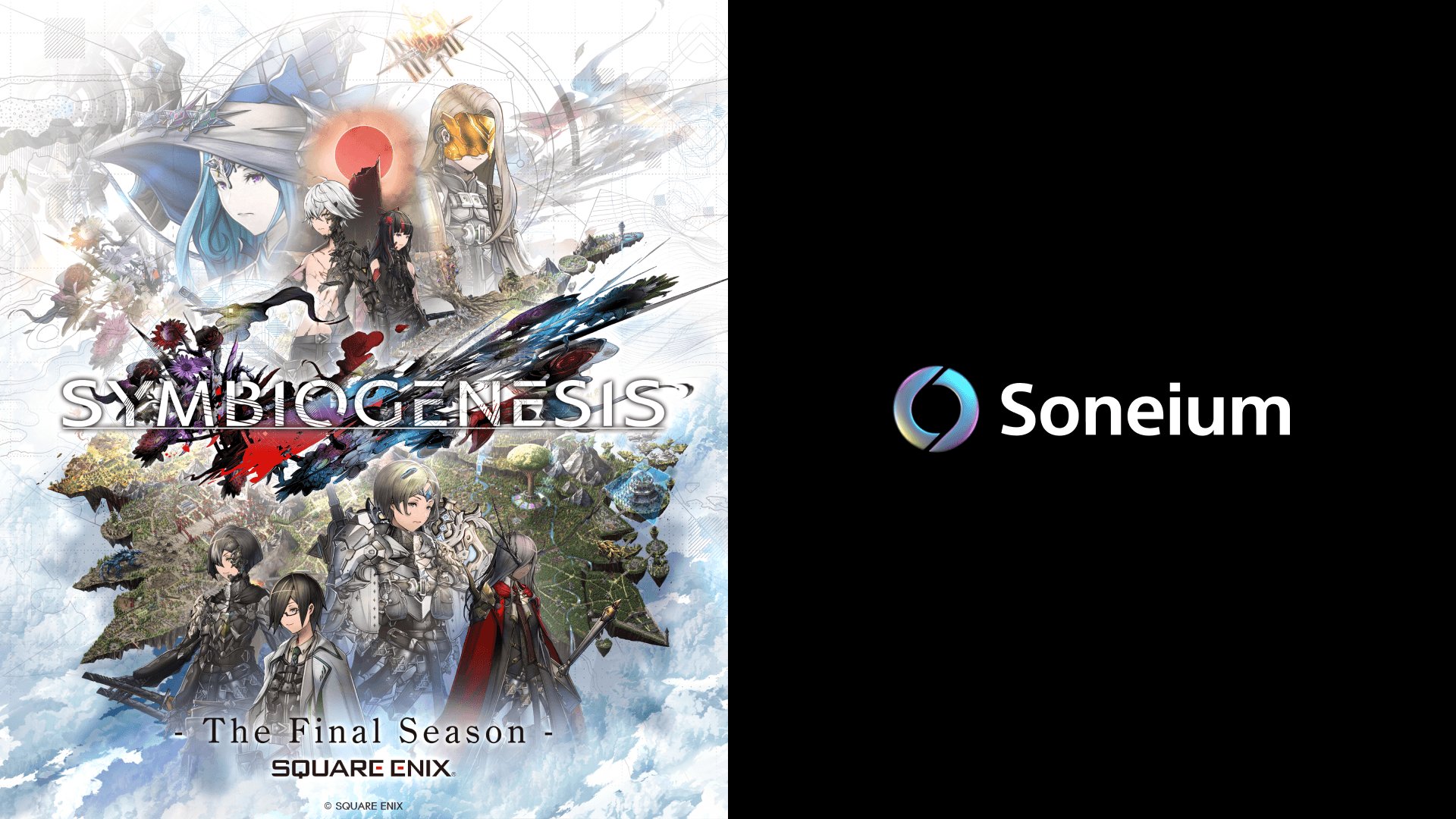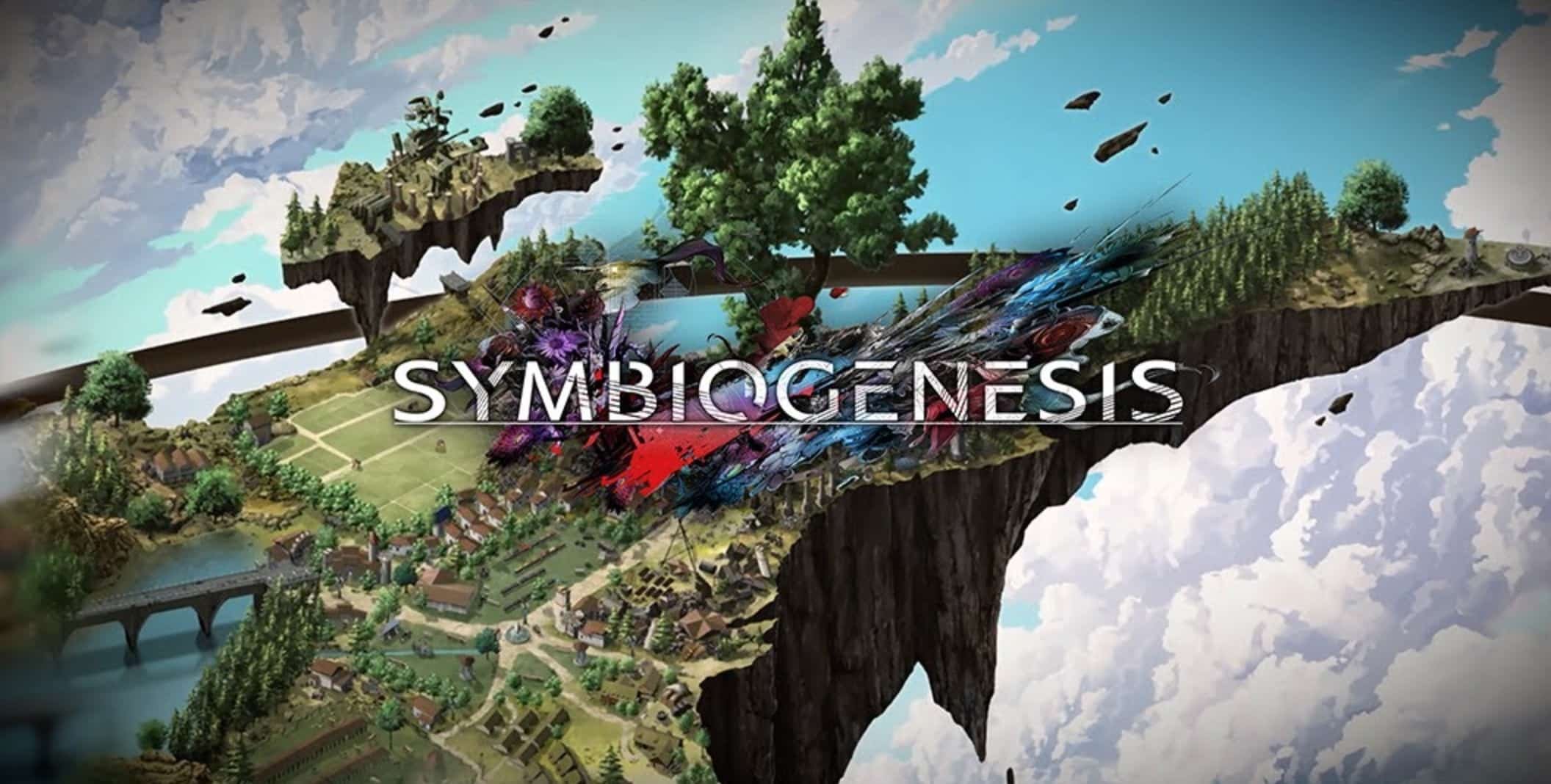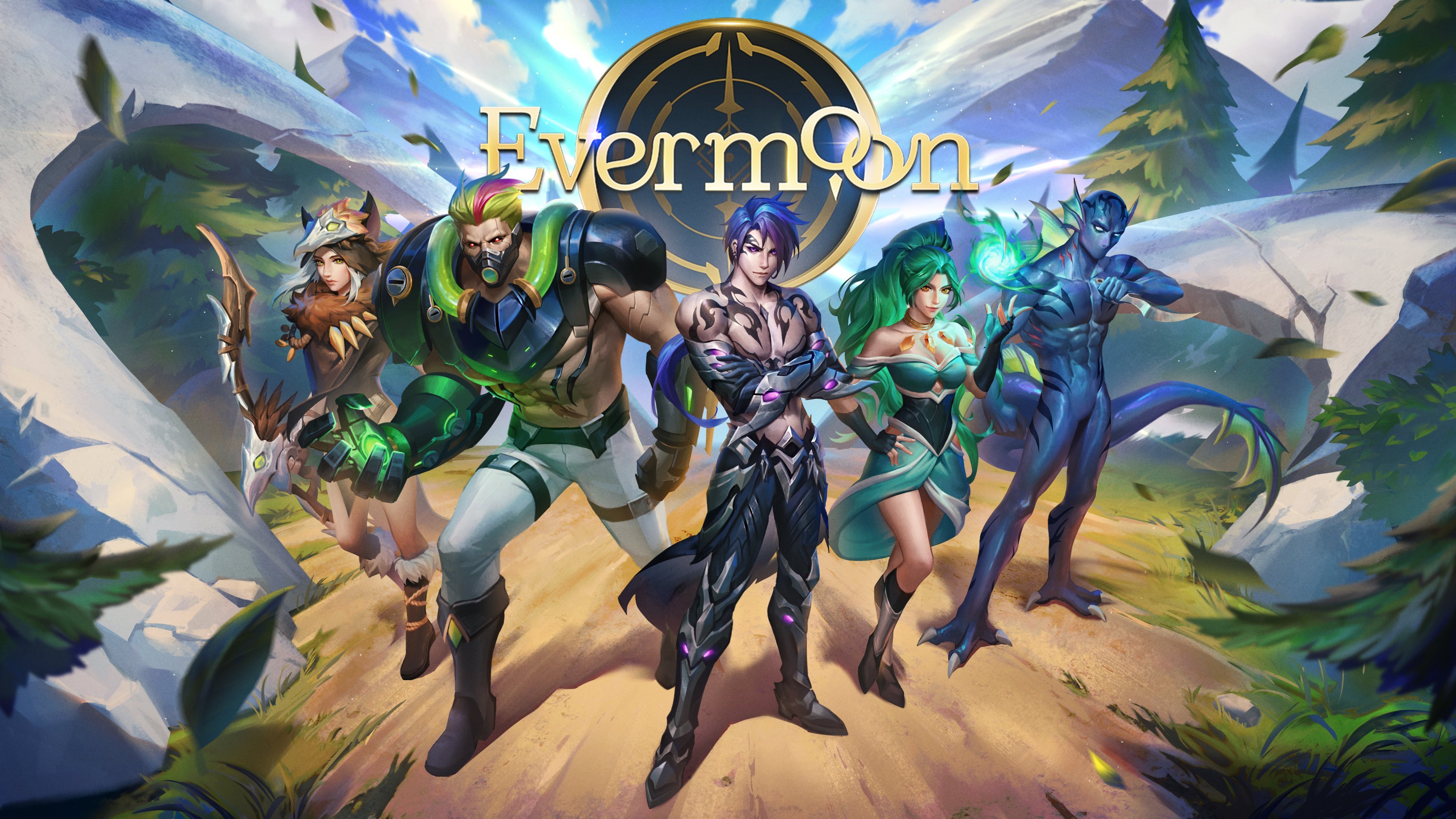Square Enix’s Symbiogenesis is set to expand and live on via Sony’s Soneium blockchain, after facing a planned discontinuation in July 2025. This move brings together a big publisher’s Web3 ambitions with a rising blockchain platform, setting the stage for new forms of interactive entertainment and cross-game collaboration.
Symbiogenesis Joins Soneium: A New Era for Blockchain Gaming
With the migration of Symbiogenesis to Soneium, Sony positions its blockchain as a hub for the latest advancements in digital games. Symbiogenesis is the first major Web3 title from a recognized publisher, marking a critical moment for blockchain gaming that could draw more players and industry attention.
Game studios now see Soneium as a channel for creative partnerships, thanks to Sony’s backing and the open structure of the platform. More intellectual property (IP)-driven games are entering this ecosystem, making cross-title events and content a key attraction.
This new initiative isn’t just about migration; it’s about connecting popular games and communities using the foundation of blockchain technology. Players are promised a shared experience that intersects multiple game worlds and rewards their participation in novel ways.
The Soneium blockchain aims to become a trustworthy space for both digital ownership and creative expression, directly supporting stories and gaming experiences developed by leading companies like Square Enix.
Sony calls Soneium’s ecosystem foundational for future digital interactive entertainment, blending narrative depth and technological innovation for gamers worldwide.
The Transition from Shutdown to Expansion
Originally, Symbiogenesis was supposed to end in July 2025 due to its underwhelming early impact. Sony’s decision to expand the game on Soneium signals a strategic move to rejuvenate its lifecycle and pull it into a larger onchain gaming network.
This transition gives Square Enix’s experiment a second life, tapping into Sony’s resources and partnerships. Instead of vanishing, Symbiogenesis now serves as the entry point to other blockchain games, incentivizing players to try additional experiences.
Players faced uncertainty earlier in the year, but are now seeing new ways to participate and potentially shape the narrative and economy across several games. This change may rescue the project from low adoption and create new engagement.
The expansion is driven by the ambition to create impactful cross-game initiatives, acknowledging that traditional Web3 launches alone are not enough to guarantee a lasting fanbase.
How Soneium is Attracting Major Game Publishers
By enabling cross-game collaboration, Sony’s Soneium blockchain differentiates itself from other existing blockchains. The open infrastructure and support for interoperable NFTs appeal to established publishers eager to modernize classic game elements and experiences.
Soneium’s underlying technology provides tools for content ownership, creative autonomy, and community management. This offers game publishers incentives to develop new, interconnected stories beyond the boundaries of a single game or studio.
Large game companies see the Soneium blockchain as a gateway to a new digital economy, where players can move assets and unique experiences between titles created by different studios. Square Enix is one of the first, but the structure is designed for more IPs to join and collaborate.
Sony’s reputation and their drive to reinvent the way games are published and played gives Soneium an edge when negotiating with other large companies in the games and entertainment sector.
What Makes Symbiogenesis Unique on the Blockchain
Symbiogenesis was one of the first large-scale narrative games built on blockchain principles. Its sprawling story – spread across six chapters, with more than 1.1 million words – unfolds through 10,000 unique, collectible NFT characters that unlock fresh plotlines and choices for each player.
The game blends interactive storytelling with verifiable ownership. Every NFT represents not only a story fragment but also a vehicle for personal achievement and status. Players shape world events by their choices, which ripple throughout the overall game ecosystem.
This structure lets fans influence the game’s outcome directly and rewards their engagement with exclusive content, making Symbiogenesis stand out among typical blockchain projects, which often emphasize speculation over gameplay and narrative depth.
Interactivity and personal agency are deeply integrated, as owning certain character NFTs can change how stories unfold, giving fans unique reasons to participate regularly and actively.
Cross-Game Interoperability: Symbiogenesis, Evermoon, and Sleepagotchi
The latest Soneium initiative connects Symbiogenesis with two other blockchain games: Evermoon and Sleepagotchi. This is a demonstration of Soneium’s core feature – true cross-game interoperability.
Players who complete special quests in Symbiogenesis can carry their rewards into Evermoon and Sleepagotchi, opening new content and special in-game advantages. It’s designed to keep players invested across the entire Soneium ecosystem.
Each game retains its unique style:
- Symbiogenesis brings narrative depth and collection
- Evermoon is a fast-paced onchain MOBA
- Sleepagotchi gamifies daily routines
For the first time, the actions in one game provide concrete, meaningful benefits in others, breaking down boundaries between digital worlds and giving gamers more reasons to stay active.
Collectibles and NFTs: Unlocking New Experiences for Players
In Symbiogenesis, collecting NFTs isn’t only about owning digital art. Each NFT, often representing a character or special item, directly unlocks story content, in-game rewards, and determines how much impact a player can have on future chapters.
Completing specific events – like limited-time quests – grants unique NFTs that offer lasting value. One example is the commemorative NFT that lets players access exclusive perks or features in partner titles like Evermoon or Sleepagotchi.
This system sets the stage for a broader economy of collectibles, blending play and collection. Instead of everything being locked behind paywalls or chance, activity and achievement unlock new opportunities.
NFT-driven gaming encourages creativity, letting a player’s portfolio grow along with their experiences across the Soneium-powered universe.
Square Enix and Sony see this as a new chapter in digital asset management. Each collectible is a potential passport to new stories, status, or in-game advantages, establishing a richer feedback loop for participation.
Ecosystem Rewards and Limited-Time Quests
To drive engagement, Soneium is rolling out limited-time quests and community events. Players who finish certain chapters of Symbiogenesis are promised commemorative collectibles and, in some cases, early access or status in related games.
One major event crossing all three games rewards those who complete enough Symbiogenesis content with a collectible NFT, opening added features in the Evermoon and Sleepagotchi universes. This emphasizes the idea of a “shared quest” across different playstyles and devices.
The cross-game ecosystem means:
- Achievements in one game unlock rewards elsewhere
- Players stay tied to the Soneium network
- Collectibles keep value by being usable and visible in multiple places
This approach also encourages experimentation with new titles, as players don’t lose progress or recognition when jumping into a sister project in the Soneium family.
Evermoon: Competitive MOBAs Meet Blockchain
Evermoon is Soneium’s flagship multiplayer online battle arena (MOBA) project, using blockchain for interoperable NFTs and digital rewards. Competitive 5v5 play forms its core, with a focus on both fast action and DeFi-enabled prizes – giving players more than just cosmetic upgrades.
Also Read
AI Leaders Warn Senate: Global Cooperation Essential for AI Advancement
The collaboration between Evermoon and Symbiogenesis includes limited-edition digital stickers and collectibles for those who participate in crossover events. These stickers can:
- Change player profiles
- Unlock unique cosmetic content
- Boost user perks within Evermoon
Interoperability means your activity in Symbiogenesis affects what you can do or showcase in Evermoon, deepening the sense of achievement across both games. Players gain flexible utility from their NFTs, not just bragging rights.
For Soneium, Evermoon highlights the move toward games rewarding skill and engagement rather than random drops or microtransactions – blending traditional game fun with the possibilities of onchain economies and cross-game utility.
Sleepagotchi: Gamified Daily Routines on Soneium
Sleepagotchi targets a different audience, using simple, habit-forming mechanics built on mobile platforms and familiar messaging apps. Its core loop is about rewarding daily check-ins and healthy activities, making it much lighter than traditional games.
Also Read
Last Chance to Exhibit at TechCrunch AI Sessions at Berkeley
The title’s popularity on Telegram fueled its new expansion to LINE, and now, through Soneium, it gains interoperability with larger games and brand-driven rewards. In the latest initiative, Symbiogenesis players can unlock the exclusive “Epic Rarity One-Horned Dragon” pet in Sleepagotchi for completing crossover quests.
These partnerships let even casual players taste the benefits of owning and carrying a unique digital item throughout the broader Soneium network.
By synthesizing elements from Tamagotchi-style apps with blockchain incentives, Sleepagotchi helps Soneium grow into mobile-first markets – making Web3 gaming more convenient and accessible.
Sony’s Vision for Connected Onchain Entertainment
Sony champions Soneium as a collaborative playground where everyone is a creator and owner. By enabling game worlds and narrative universes to connect and interact, Sony aims to change the way games are developed, played, and monetized.
Also Read
Florida Encryption Backdoor Bill for Social Media Fails to Pass
The ecosystem fosters projects that bring together traditional strengths like world-building and character-driven stories with blockchain-enabled rewards, cross-title quests, and real digital property rights.
Sony’s vision is a digital entertainment layer where content, achievements, and even character identities can move fluidly through games, apps, and communities, uniting players across genres and devices.
Major studios like Square Enix are models for what this looks like in practice, but Sony wants the infrastructure accessible to any game studio or creative team worldwide.
Why Soneium Stands Out in Web3 Gaming
Unlike standalone Web3 launches, Soneium supports a living, breathing ecosystem of games that interact with one another. This interoperability adds real utility to digital items and lets players see the benefits of persistent progress over time.
Also Read
Apple’s New Chips Target Smart Glasses, Macs, and AI Hardware
Key factors that make Soneium noteworthy:
- Open platform for IP-driven content
- Interoperable assets and achievements
- Strong backing from Sony and leading publishers
- Decentralized yet curated for quality and safety
Soneium is not just hosting blockchain games – it is reinventing the definition of ownership, achievement, and community in digital play, appealing to both players and developers looking for sustainable engagement.
This approach is helping break down skepticism around blockchain games, which have sometimes felt experimental or disconnected from proven gameplay models.
Current Challenges and Fan Reception for Symbiogenesis
Despite its potential, Symbiogenesis has faced challenges since launch. Reports indicate that only a few hundred fans have collected the NFTs so far, and widespread adoption has lagged behind initial expectations.
Also Read
Widespread Timeline Issues Hit X as Users Report Outages
Some players cited a lack of traditional incentives and unclear gameplay depth in the early months. Others questioned whether story-centric blockchain games could achieve mainstream pull compared to action-focused or collectible-heavy models.
The move to Soneium and added cross-game rewards are direct attempts to address these problems – making the experience more engaging and worthwhile for a larger pool of users.
The future popularity of Symbiogenesis will depend on how well Sony and Square Enix can turn these partnerships and features into lasting, compelling value for gamers who seek both story and substance in Web3 environments.
What This Signals for the Future of Blockchain Gaming
This pivot with Symbiogenesis sets important precedents for blockchain gaming under major publishers. Instead of shutting projects down when success is limited, companies are now drawing out new potential by linking games and rewards across larger branded ecosystems.
Also Read
Zen Agents by Zencoder: Team-Based AI Tools Transform Software Development
If successful, Soneium’s approach could redefine what digital “ownership” means – allowing virtual possessions to move across franchises, and letting stories, achievements, and creative acts become transportable and cumulative.
By fostering interconnected, collaborative play and giving developers more freedom to experiment with story-driven or cross-game mechanics, next-generation platforms like Soneium are broadening the possibilities for Web3 entertainment.
Other publishers, studios, and solo developers will be watching to see if expanding existing franchises through cross-title quests and pooled player communities can become the new gold standard in digital play.











